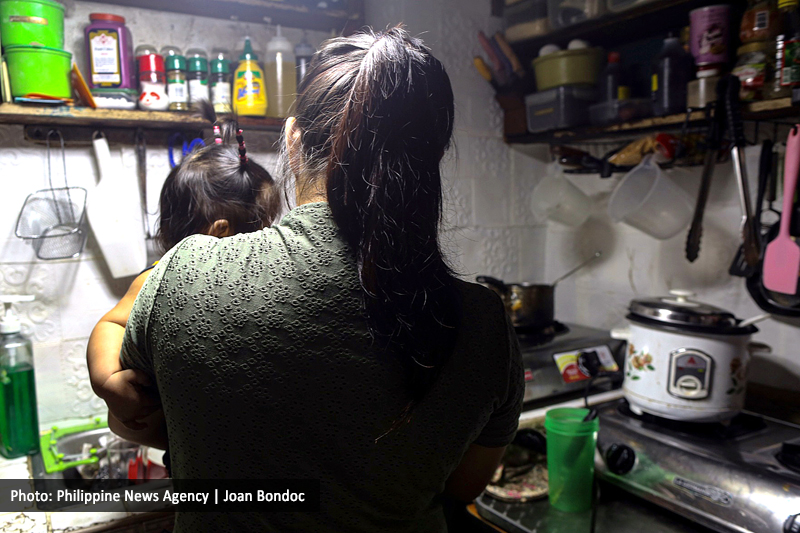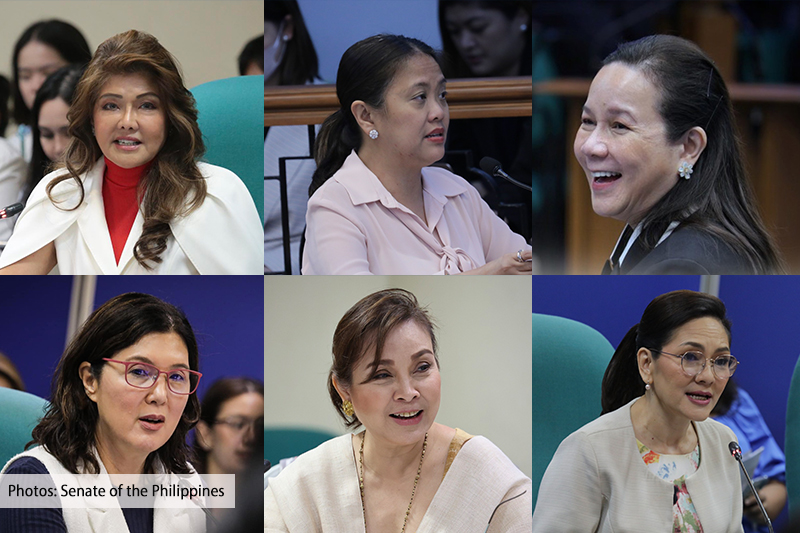IN ITS RECENT policy note titled “Filipino Women in Leadership: Government and Industry,” the Philippine Institute for Development Studies (PIDS) said that the country, generally, is doing well when it comes to gender equality.
Female students, for one, are more likely to complete their tertiary studies compared to the boys; and when it comes to the workforce, more women take on higher-paying positions compared to men.
Even the gender pay-gap in the Philippines is considered to be smaller than that of more developed nations.
Let’s not forget, too, that we’ve had two female presidents and vice presidents since the end of the Marcos dictatorship.
Still, there is something lacking, which the study highlights: that of greater female representation in some of government’s and industry’s highest positions, or the posts which allow them to be directly involved in making important decisions and setting directions.
“In the government, these positions include elective and appointive positions across the legislative, executive, and judicial branches. In the industry, they include chief-level positions, board memberships and director positions,” stated the report penned by University of the Philippines College of Mass Communication professor Clarissa David, PIDS senior research fellow Jose Ramon Albert, and PIDS research analyst Jana Flor Vizmanos.
Citing the senate as one example, which has had three to six out of 24 female senators since 2001, the report states that since the 12th Congress in the same year, only Loren Legarda has served in a leadership position. The report further states that no woman has ever been senate president or house speaker.
Women are also underrepresented in local elective offices – and it paints a “particularly alarming” picture, according to the report.
“In 2013, only 11 per cent of elected local officials were female, a sharp decline from 20 per cent in 2010, 18 per cent in 2007, and 17 per cent in 2004. At the barangay level, specifically, women only occupied 19 per cent and 27 per cent of all barangay captain and councilperson posts, respectively,” the report reads. This doesn’t mean people aren’t voting for women; it’s because fewer women are running for office.
As for Cabinet positions, the report finds that this has been a male-dominated arena since 1986. The usual posts women get are also those more associated with being “female”, such as health, tourism and social welfare. Meanwhile, they are less represented in agencies concerning economics, budget and management, finance and foreign affairs.
“The Department of Social Welfare and Development, in particular, has had only female secretaries since 1986. Not surprisingly, no woman has ever headed the agriculture, defence, interior and local government, and public works departments, which are traditionally male-dominated offices,” the report states.
As for female representation in industry leadership positions, the PIDS report finds that women, in the last 15 years, have occupied around 40 to 43 per cent of management positions. When it comes to ownership participation, however, the number has stagnated at 69 per cent. The Philippine scenario isn’t far from the experience of other Asean countries such as Indonesia, Malaysia, Vietnam and Laos PDR, the report states.
“In a survey of businesses across different countries, the Philippines ranks among the highest in the proportion of senior management team roles held by women at 40 per cent (Grant Thornton 2017).
However, the evidence of equity in the promotion process ends at supporting roles in the senior management level (e.g., human resource officer and chief financial officer). Unfortunately, the proportion drops at the level of corporate executives and memberships in boards,” reads the report.
Citing World Bank data, the report’s authors found that between 2009 to 2015, the proportion of companies with females as top managers dropped from 32.7 to 29.9 per cent.
Firms that do have women in top-level positions such as president or chair are usually in the retail, food and pharmacy sectors, and, usually, the same person occupies multiple positions, the report states, making examples of Teresita Sy-Coson (president and chair of the board of both SM Mart and SM Retail, Inc) and Robina Gokongwei (board member of four Robinsons-owned companies).
Based on these data, the PIDS report’s authors have a few recommendations to improve female representation both in government and industry:
Set a target of 40 per cent representation across high-level government offices.
Place more incentive schemes which will encourage women to run for office, as well as make political systems and workplaces less hostile – which could be done by the Commission on Elections.
For appointees in certain government posts, adopt “soft quota and specific affirmative-action-type policies” which will ensure that a fair proportion of these appointees are women.
Create more in-depth research on the constraints women face in their respective workplaces, particularly issues surrounding culture, childcare, family-related benefits and gender stereotypes, which will allow businesses to decide what kinds of strategic interventions they need to do.
Policy review: for government, a review of existing regulations is needed to make political participation and leadership more inclusive; for industry, policies concerning equity in hiring, retention and promotion should be reviewed, taking into consideration women, especially working moms.












